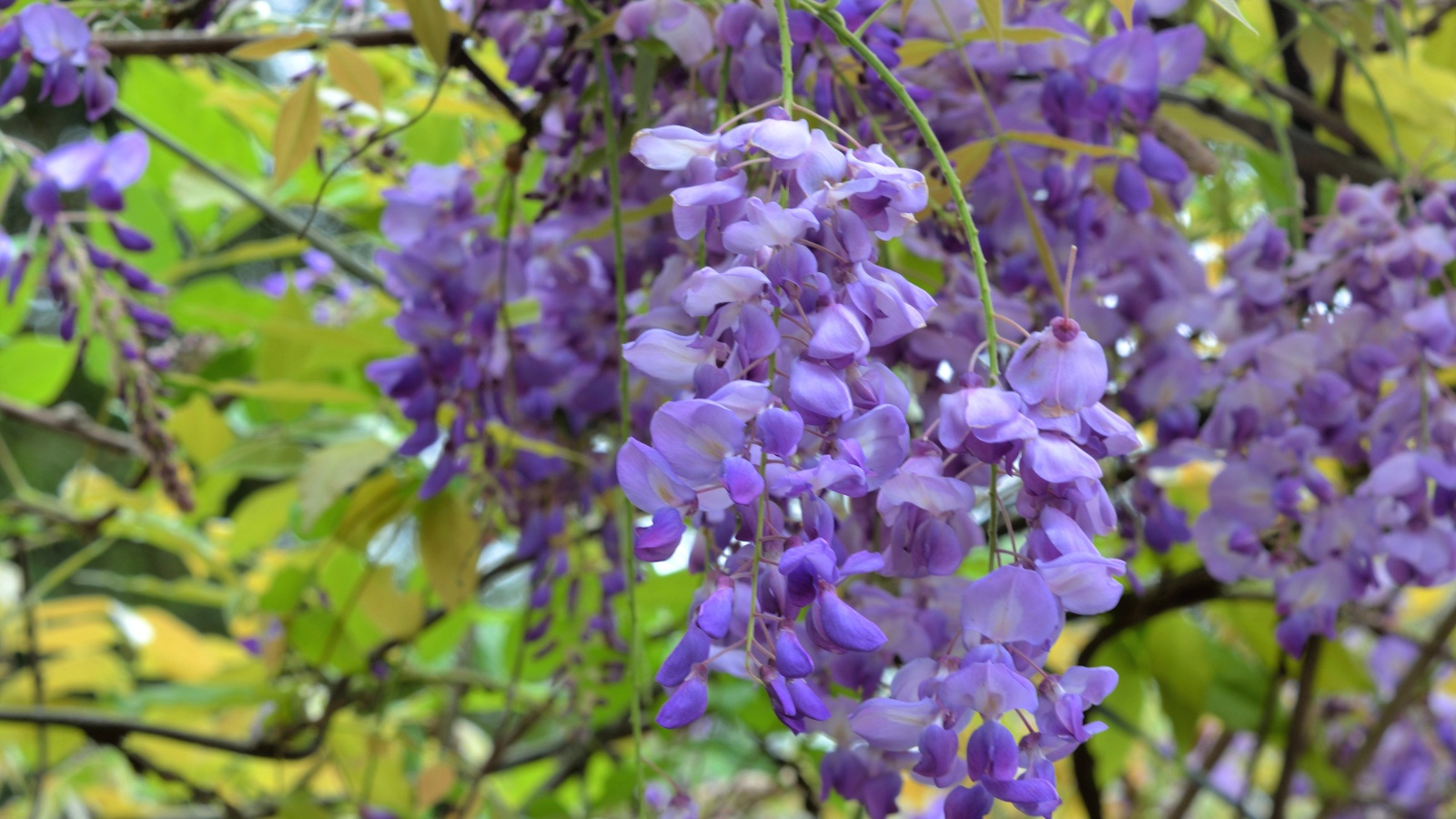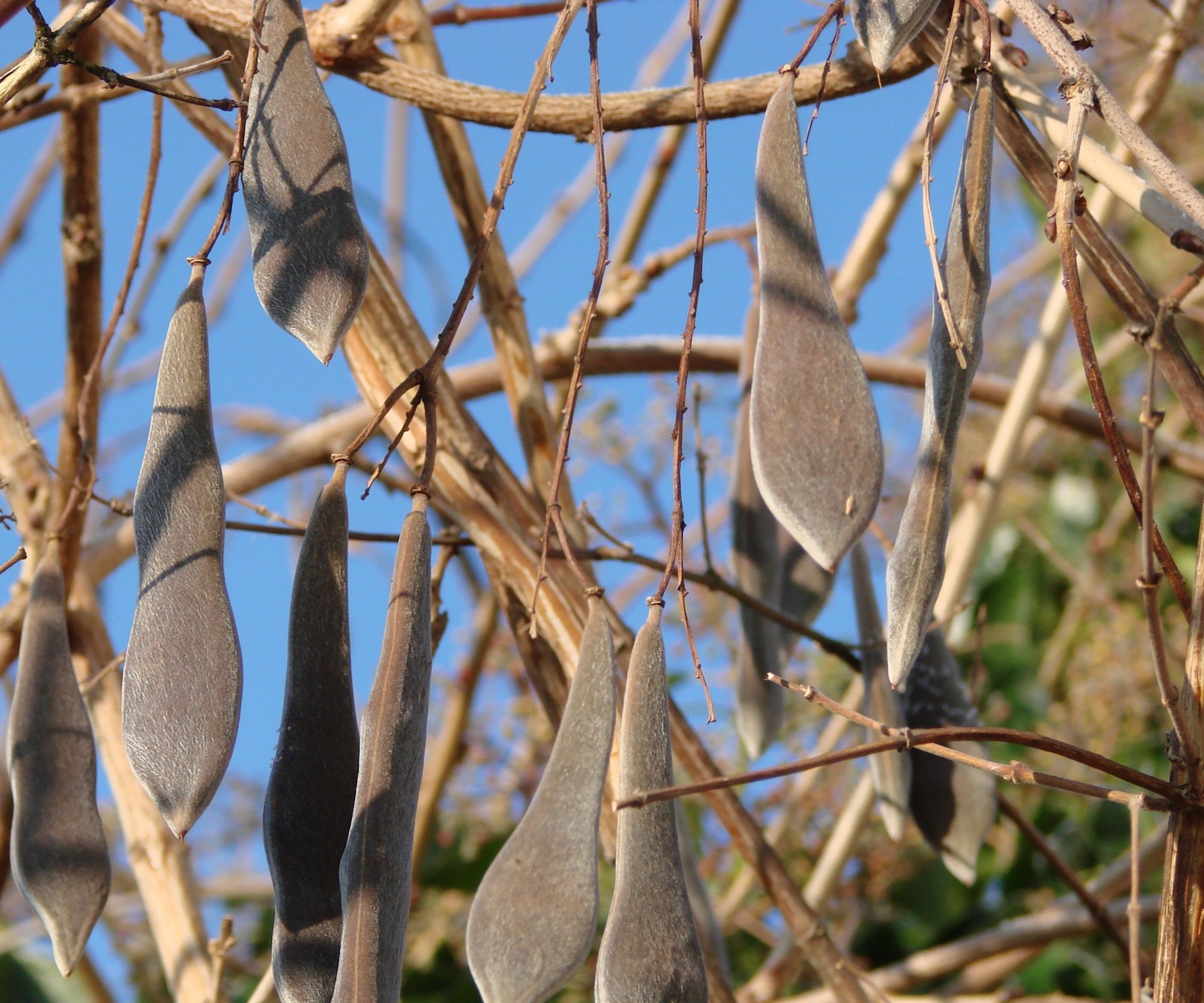What to do with wisteria in the fall – to ensure your climbers bloom better than ever next year
Everything you need to know about caring for wisteria plants in the fall to prepare for the colder months


The Wisteria genus is a small plant family made up of only four species. Three of these are found growing in Asia, while one, Wisteria frutescens, commonly known as American wisteria, is native to many states across North America, including Virginia, Texas and Florida. All species are prized for producing perfumed clusters of purple or white flowers that emerge in late spring to early summer, often seen covering garden walls, fences and pergolas.
Whatever species is in your yard, it is important to know what to do with wisteria in the fall. As the days get shorter and the temperature drops, there are a handful of crucial tasks to complete to ensure that your climbing plants return better than ever next year.
As a former professional gardener, I have cared for many different varieties, most recently tending to an extensive pergola walkway covered by Japanese wisteria, Wisteria floribunda 'Alba', in the Pienza region of Tuscany. This tough and resilient species was able to tolerate scorching summers and frozen winters, but some key tasks in October and November formed an important part of my seasonal checklist. Here, I reveal how best to care for these fast-growing climbing plants in the fall.

What to do with wisteria in the fall
When considering how to grow wisteria, these drought-tolerant climbing vines are remarkably hardy, surviving scorching summers and snowy winters. By following a few simple steps in the fall, you can ensure that your climber returns better than ever the following year, with a bounty of fragrant flowers.
1. Mulch your wisteria plants

Wisteria plants are hardy down to US hardiness zone 5. Generally, these climbers do not need protection from cold weather during fall and winter, tolerating temperatures down to -15°C/5°F. However, in cooler regions, such as Illinois, New York, Pennsylvania and Michigan, providing some winter protection around the roots is a good idea.
'Wisteria should be mulched in the fall to help protect the roots from colder temperatures during the winter months ahead,' says plant expert Katie Sunderlage. 'Mulching is especially important in climates where wisteria is borderline hardy, such as US hardiness zone 4, including Montana, Alaska, North Dakota and Minnesota.
'Mulching will also help water retention during the dormancy period, and improve soil health and soil structure in the year ahead, which can result in better blooming the following year.'
Design expertise in your inbox – from inspiring decorating ideas and beautiful celebrity homes to practical gardening advice and shopping round-ups.
Mulch and compost sacks are available from Amazon.

Operations Manager at Holland Group, managing the customer service department and purchasing. Katie has been in the green industry since 2005 in the Greater Milwaukee area, earning her degree in Horticulture in 2008. She has been able to share her love for plants working in multiple garden centers, in sales positions and most recently in an online retail platform at Holland Group.
2. Tie in but do not prune wisteria stems

'Wisteria should not be pruned in the fall,' Katie continues. 'It is best to wait until winter, usually around February, when the plant is completely dormant before reaching for your pruning snips. It is also much easier to see where to prune once all the leaves have fallen, so it is best to sit back and enjoy the golden foliage display in the fall.'
While pruning is to be avoided at this time, it is a good idea to learn how to train and tie in wisteria shoots. During October, November and December, stormy weather and strong winds can damage your wisteria, so taking the time to tie in any long, loose or unsupported stems can help to protect your climber.
There are many suitable products available online, such as this garden twine, available from Amazon that is easy to use and cost-effective. Loosely tie in stems to your framework, trellis or fence, ensuring the stems can move a small amount. Tying too tightly can damage your plant.
3. Remove wisteria seed pods

Many wisteria species are vigorous and can be classed as an invasive plant if left unmaintained. For example, the Chinese wisteria, Wisteria sinensis, is a fast-growing plant that can cause problems if left unpruned or allowed to set seed.
For this reason, it is a good idea to remove wisteria seed pods during the fall, before they scatter and germinate around your yard. Simply trim brown seed pods, as seen in the image here, during the fall. Use clean, sharp tools, such as these Felco pruning snips, available from Amazon, and collect the pods in a bucket.
If you want to grow more wisteria plants, be sure to harvest and save the seed, or if unwanted, dispose of the pods in your green waste collection. One composting mistake to avoid would be tossing these seed pods onto your compost heap, as they can germinate and grow in the fertile, rich soil.
FAQs
Should I water wisteria plants in the fall?
Watering wisteria up until the ground is completely frozen is important to help provide enough moisture over fall and winter. If the top half an inch of the soil is dry, it should be watered. Once the ground is frozen, watering is no longer necessary.
Should I protect a pot-grown wisteria?
'The soil in a pot will freeze much sooner than soil in your borders,' says plant expert Katie Sunderlage. 'This can cause harm and affect the health of your plant the following spring.' While it is tricky to move a climbing plant, it can be a good idea to protect the base of the plant, either by mulching your pot or by using a frost protection cover, available from Amazon.
It is not necessary to fertilize wisteria during the fall months. Feeding at this time can do more harm than good. As a member of the pea family, Fabaceae, wisteria plants are nitrogen-fixing, so the roots of the plant produce nitrogen that the plant can then use. Along with a fresh application of mulch, your plant will have all the goodness it needs to make it through to spring.
For more inspiration and advice, see our guide on how to grow wisteria from cuttings, to try your hands at propagating this popular climbing plant.

Thomas is a Content Editor within the Gardens Team at Homes and Gardens. He has worked as a professional gardener for both public spaces and private estates, specializing in productive gardening, growing food and flowers. Trained in Horticulture at the Garden Museum, he has written on gardening and garden history for various publications, including The English Garden, Gardens Illustrated, Hortus, The London Gardener and Bloom. He has co-authored a Lonely Planet travel book, The Tree Atlas, due out in 2024.
